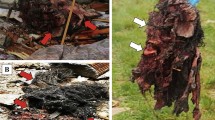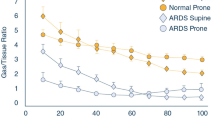Summary
Drowning and near-drowning accidents of children are very common in the Federal Republic of Germany. The aim of this study was to examine causes and effects of drowning accidents in Germany in order to compile preventive and curative strategies. Data of 734 childhood drowning accidents occurring in Germany in 1995 and 1996 were collected. Of the children, 40.2% were aged one to three at the time of the drowning accident. Childhood drowning accidents happened in each season, peaking in summer (43.1%). They occurred predominantly on weekends or bank holidays and, in over 50% of the cases, in the afternoon, apart from submersion incidents of pre-ambulatory infants, 60% of which happened after 6 pm. High-risk areas were public baths as well as private homes, with ponds ranking highest (22.4%). Momentary lapses of supervision were the most frequent cause of immersion accidents (56.2%). In 69.3% of all cases immediate life-saving measures were applied by laypeople. Cardiopulmonary resuscitation had to be carried out at the place of accident in 31.5% of all neardrowning accidents. A total of 29.5% of the children had to be intubated at the scene and ventilated on their way to hospital. Drowning accidents caused hypothermia in 52.5%. In 11.3% of all near-drowning accidents pulmonary deterioration occurred during hospitalization, whereby leading to death in 36.8% of all cases. 16.9% of all patients developed cerebral edema, which was lethal in 48.7%. On the whole, 11.5% of the children treated in a hospital after near-drowning accidents died, 4% remained in a vegetative state, suffering permanent neurological damage, and 79.1% completely recovered. Children were most likely to survive when maintaining spontaneious breathing and cardiac activity at the place of accident (98% of the these had a full recovery) as well as a normal body temperature or mild hypothermia down to a temperature of 33 °C (88.9% of these survived without complications). The outcome of drowning accidents can be improved by sensitizing to preventive measures, for which precise suggestions ought to be made, as well as to enhanced supervision especially of preschool children. Sufficient first aid measures applied both by witnesses of drowning accidents and rescue services can increase survival rates and decrease complications.
Zusammenfassung
Ertrinken und Beinahe-Ertrinkungsunfälle bei Kindern sind in Deutschland ein häufiges Unfallgeschehen. Ziel einer bundesweiten Analyse war es, Ursachen und Folgen von Ertrinkungsunfällen zu untersuchen, um Ansätze für Präventions- und Versorgungsstrategien zu finden. Dazu wurden in den Jahren 1995/96 734 Ertrinkungsunfälle in Deutschland ausgewertet. 40,2% der Kinder waren zum Zeitpunkt des Ertrinkungsunfalls zwischen ein und drei Jahre alt. Beinahe-Ertrinkungsunfälle traten in jeder Jahreszeit auf, allerdings mit einem deutlichen Gipfel in den Sommermonaten (43,1%). Bevorzugt ereigneten sie sich an einem Wochenend- oder Feiertag und in über 50% in den Nachmittagsstunden, abgesehen von den Ertrinkungsunfällen im Säuglingsalter, die in 60% abends ab 18 Uhr geschahen. Als risikoreichster Unfallort wurden öffentliche Bäder sowie der häusliche Bereich identifiziert, wobei der private Gartenteich mit 22,4% an oberster Stelle rangierte. Häufigste Ursache eines Ertrinkungsunfalls war in 56,2% mangelnde Aufsicht. In 69,3% wurden die Erstmaßnahmen am Unfallort von Laien ausgeführt. Eine kardiopulmonale Reanimation wurde bei 31,5% der Beinahe-Ertrinkungsunfälle am Unfallort durchgeführt. 29,5% der Kinder wurden am Unfallort intubiert und gelangten beatmet in die Klinik. Bei 52,5% der Ertrinkungsunfälle kam es zu einer Unterkühlung, wobei 9,8% der Kinder eine schwerste Hypothermie unter 28 °C hatten. In 11,3% traten pulmonale Komplikationen auf, wobei in der Hälfte der Fälle ein RDS die Ursache war, das in 36,8% tödlich verlief. Ein Hirnödem entwickelte sich in 16,9%, wovon 48,7% der Verläufe letal waren. Insgesamt führte ein Beinahe-Ertrinkungsunfall in 11,5% zum Tod, in 4% zum apallischen Syndrom und in 5,5% zu neurologischen Defiziten. 79,1% der Kinder überlebten den Ertrinkungsunfall ohne Folgeschaden. Prognostisch günstige Faktoren waren stabile Kreislaufparameter und erhaltene Atmung nach der Rettung (98% gesunde Kinder) sowie Normothermie bis leichte Hypothermie (88,9% gesunde Kinder). Möglichkeiten einer Verbesserung des Outcomes sind eine Sensibilisierung für Präventionsmaßnahmen, für die konkrete Vorschläge gemacht werden, sowie ein Appell an eine konsequente Aufsicht bei kleineren Kindern. Eine Steigerung der Überlebensquoten und eine Minderung der Folgeschäden sind durch eine suffiziente Erstversorgung durch Notfallzeugen und durch den Rettungsdienst möglich.
Similar content being viewed by others
References
Albermann K (1997) Ertrinkungsunfälle im Kindesalter. Hautnah Pädiatrie 3:235–237
Aring C (2001) Beinahe-Ertrinken. Monatsschr Kinderheilkd 149:476–478
Beyda DH (1991) Pathophysiology of near-drowning and treatment of the child with a submersion incident. Crit Care Nurs Clin North America 2:273–280
Blum C, Shield J (2000) Toddler drowning in domestic swimming pools. Inj Prev 6:288–290
Cass DT, Ross F, Lam LT (1996) Childhood drowning in New South Wales 1990–1995: a population-based study. MJA 165(11-12):610–612
De Nicola LK, Falk JL, Swanson ME, Gayle MO, Kissoon N (1997) Submersion injuries in children and adults. Crit Care Clin 13(3):477–502
Durchholz C, Peters J, Staudt F, Pontz B (2004) Ertrinkungsunfälle im Kindesalter—eine retrospektive Analyse. Der Notarzt 20:168–172
Ellis AA, Trent RB (1995) Hospitalizations for near drowning in California: incidence and costs. J Public Health 85(8):1115–1118
Ellis AA, Trent RB (1997) Swimming pool drownings and near-drownings among California preschoolers. Public Health Rep 112(1):73–77
Elixson EM (1991) Hypothermia. Cold-water drowning. Crit Care Nurs Clin North Am 3(2):287–292
Fields AI (1992) Near-drowning in the pediatric population. Progress Ped Crit Care 8(1):113–129
Fretschner R, Klöss T, Borowczak C, Berkel H (1993) Erstversorgung und Prognose nach Ertrinkungsunfällen. Anästhesiol Intensivmed Schmerzther 28(6):363–368
Gamero J, Romero JL, Arufe MI, Vizcaya MA, Balanza E (1997) A study among the population of Sevilla of death due to submersion, Am J Forensic Med Pathol 18(1):70–74
Gillenwater JM, Quan L, Feldmann KW (1996) Inflicted submersion in childhood. Arch Pediatr Adolesc Med 150:298–303
Hirsch WD (1988) Diagnostik und präklinische Therapie beim Kältetrauma. Notfallmedizin 14:101–108
Kallas HJ, O’Rourke PP (1993) Drowning and immersion injuries in children. Current Opinion Pediatrics 5:295–302
Kemp AM, Sibert JR (1991) Outcome in children who nearly drown: a British Isles study. BMJ 302(6782):931–933
Kemp A, Sibert JR (1992) Drowning and near drowning in children in the United Kingdom: lessons for prevention. BMJ 304(6835):1143–1146
Kemp AM, Sibert JR (1993) Epilepsy in children and the risk of drowning. Arch Dis Child 68(5):684–685
Kyriacou DN, Arcinue EL, Peek C, Kraus JF (1994) Effect of immediate resuscitation on children with submersion injury. Pediatrics 94(2):137–142
Lavelle JM, Shaw KN, Seidl T, Ludwig S (1995) Ten-year review of pediatric bathtub near-drownings: evaluation for child abuse and neglect. Ann Emerg Med 25(3):344–348
Liller KD, Kent EB, Arcari C, McDermott RJ (1993) Risk factors for drowning and near-drowning among children in Hillsborough County, Florida. Public Health Rep 108(3):346–353
Lloyd RJ, Williams SD, Thurman DJ, Keller PA (1992) Submersion injuries in children younger than 5 years in urban Utah. West J Med 157(6):641–644
Marx M, Golej J, Fürst G, Hermon M, Trittenwein G (1995) Akute respiratorische Insuffizienz (ARDS) bei einem Kleinkind nach Ertrinkungsunfall: Therapie mit exogenem Surfactant und Hochfrequenz-Oszillationsbeatmung. Wien Klin Wochenschr 107/4:146–148
Mayr JM, Spitzer P (1999) Schwimmbadunfälle: Riskante Wasserrutschen und Sprünge vom Beckenrand. Monatsschr Kinderheilkd 147:356–359
Mizuta R, Fujita H, Osamura T, Kidowaki T, Kiyosawa N (1993) Childhood drownings and near—drownings in Japan. Acta Paediatr Jpn 35(3):186–192
Nieves JA, Fuller L (1996) Childhood drowning: review of the literature and clinical implications. Pediatr Nurs 22(3):206–210
Noonan L, Howrey R, Ginsburg CM (1996) Freshwater submersion injuries in children: a retrospective review of seventyfive hospitalised patients. Pediatrics 98(3):368–371
O’Flaherty JE, Pirie PL (1997) Prevention of pediatric drowning and near-drowning: a survey of members of the American Academy of Pediatrics. Pediatrics 99(2):169–174
Quan L, Gore EJ, Wentz K, Allen J, Novack AH (1989) Ten-year study of pediatric drownings and near-drownings in King County, Washington: lessons in injury prevention. Pediatrics 83(6):1035–1040
Rossi R, Ahnefeld FW (1987) Außerklinische Erstbehandlung von Beinahe-Ertrunkenen. Dtsch Med Wschr 112:600–602
Rowin ME, Christensen D, Allen EM (1999) Pediatric drowning and neardrowning. In: Handbook Pediatr Intens Care, 3rd ed., Rogers MC, Helfaer MA (eds) Williams & Wilking, Baltimore Munich, pp 445–458
Statistisches Bundesamt: Alle Todesursachen nach Geschlecht und Alter 1995 und 1996, Pos.-Nr. E910 der ICD-9
Steensberg J (1998) Epidemiology of accidental drowning in Denmark 1989–1993. Accid Anal Prev 30(6):755–762
Stockhausen HB von, Kirschstein M (1986) Ertrinkungsunfälle, Alete Wissenschaftlicher Dienst; Zusammenfassender Bericht der 35. Tagung der Nordwestdeutschen Gesellschaft für Kinderheilkunde, S 42–48
Suominen PK, Korpela RE, Silvast TGO, Olkkola KT (1997) Does water temperature affect outcome of nearly drowned children. Resuscitation 35(2):111–115
Wilken B, Kirschstein M, Gortner L (1994) Ertrinkungsunfälle im Kindesalter. Monatsschr Kinderheilkd 142:692–698
Author information
Authors and Affiliations
Rights and permissions
About this article
Cite this article
Thüner, C., Sefrin, P. Ertrinkungsunfälle im Kindesalter. Intensivmed 43, 111–122 (2006). https://doi.org/10.1007/s00390-006-0632-2
Received:
Accepted:
Issue Date:
DOI: https://doi.org/10.1007/s00390-006-0632-2




